We recently hosted a Maker Educator Meetup for 30 K-8 science educators in collaboration with Community Resources for Science (CRS) as part of their Field Trip for Teachers program. Read on for an example of a learner-driven, inquiry-based activity that aligns with Next Generation Science Standards (NGSS) practices, built on our Approaches to Maker Education workshop!
For many participants, this was an introduction to maker-centered learning, so we got to tinkering right away. We jumped right into a hands-on, science-focused, maker-centered activity we call Tinkering with Light & Shadow, based on Light Play from the Exploratorium’s Tinkering Studio. Educators were given a simple LED, a translucent plastic sheet, and a variety of everyday objects. They quickly began to experiment and explore the relationship between light and shadow—such as how angle, distance, and movement of a light source affects the geometry of their shadows. We noticed right away that the inclusion of familiar materials—such as toys, feathers, and cheese graters—created beautiful silhouettes and patterns that led to storytelling alongside making scientific discoveries.


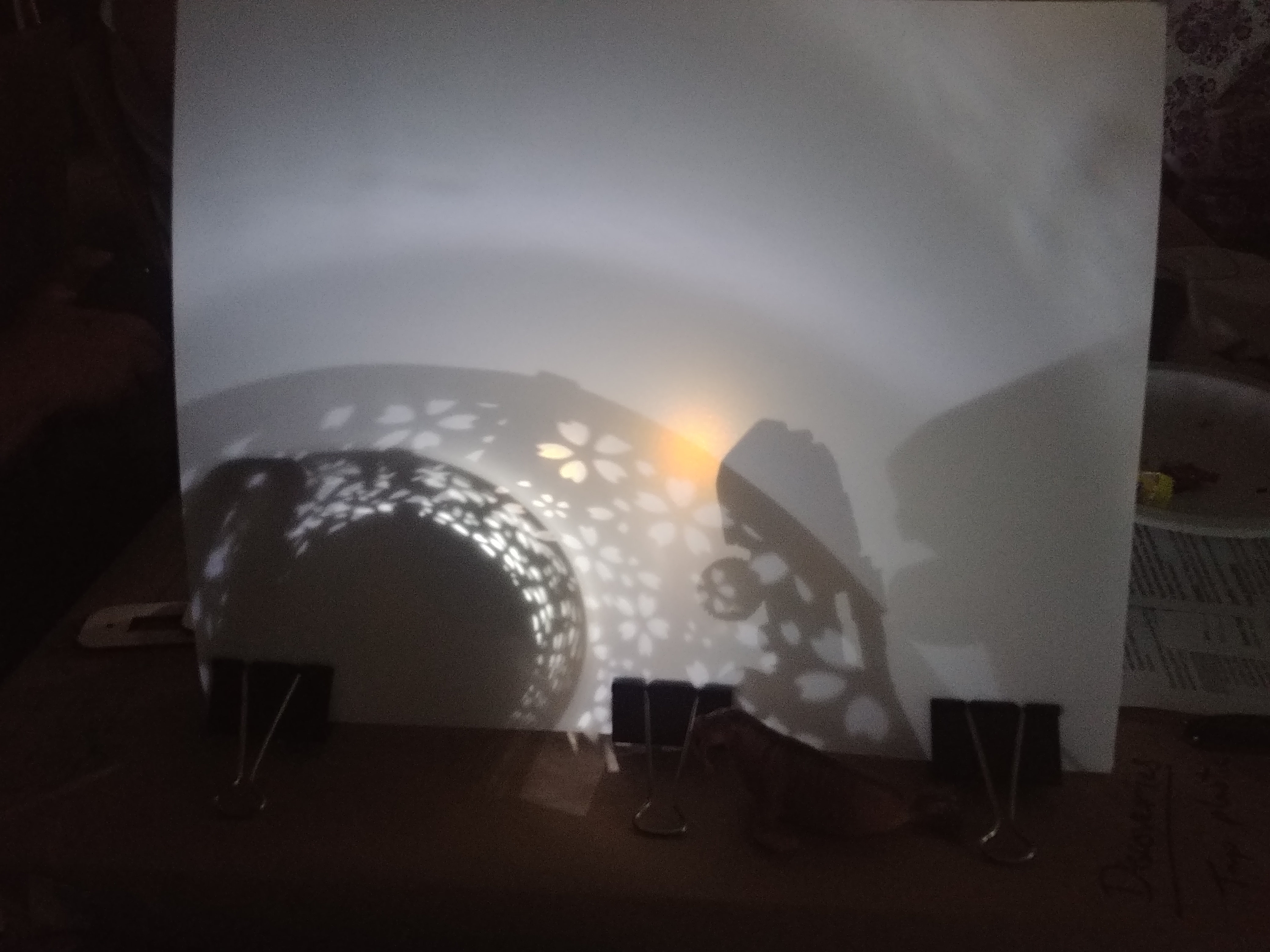
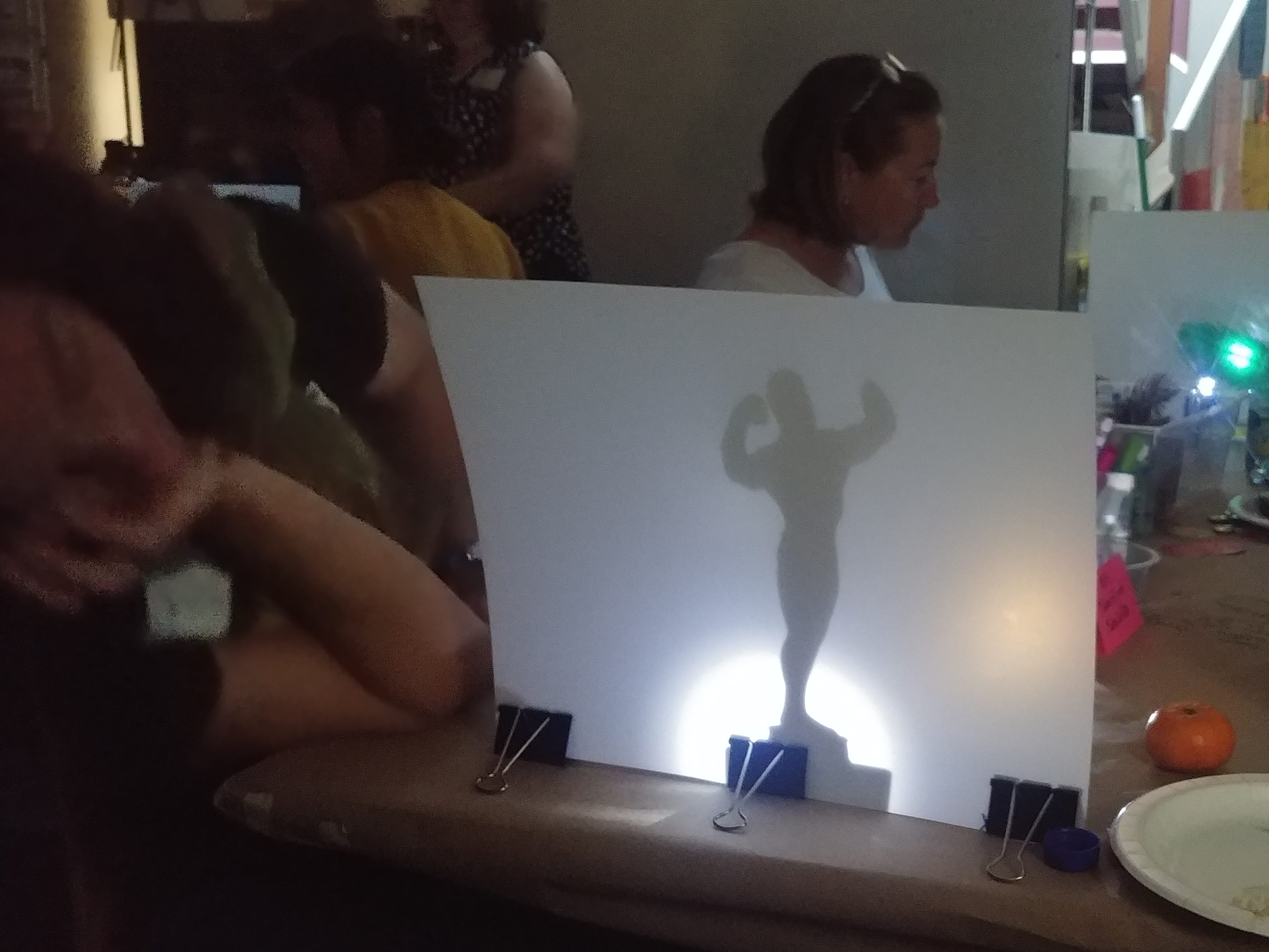
After giving educators time to explore, we worked together to build a whole group conceptual model of light. Educators collaboratively recorded and posted the discoveries they had made on the properties of light and discussed the similarities and differences in their observations. In order to investigate these phenomena more deeply, we introduced a second light source and a few new materials. By adding these variables, educators began to refine the group model by adding more discoveries while continuing to create aesthetically beautiful displays.
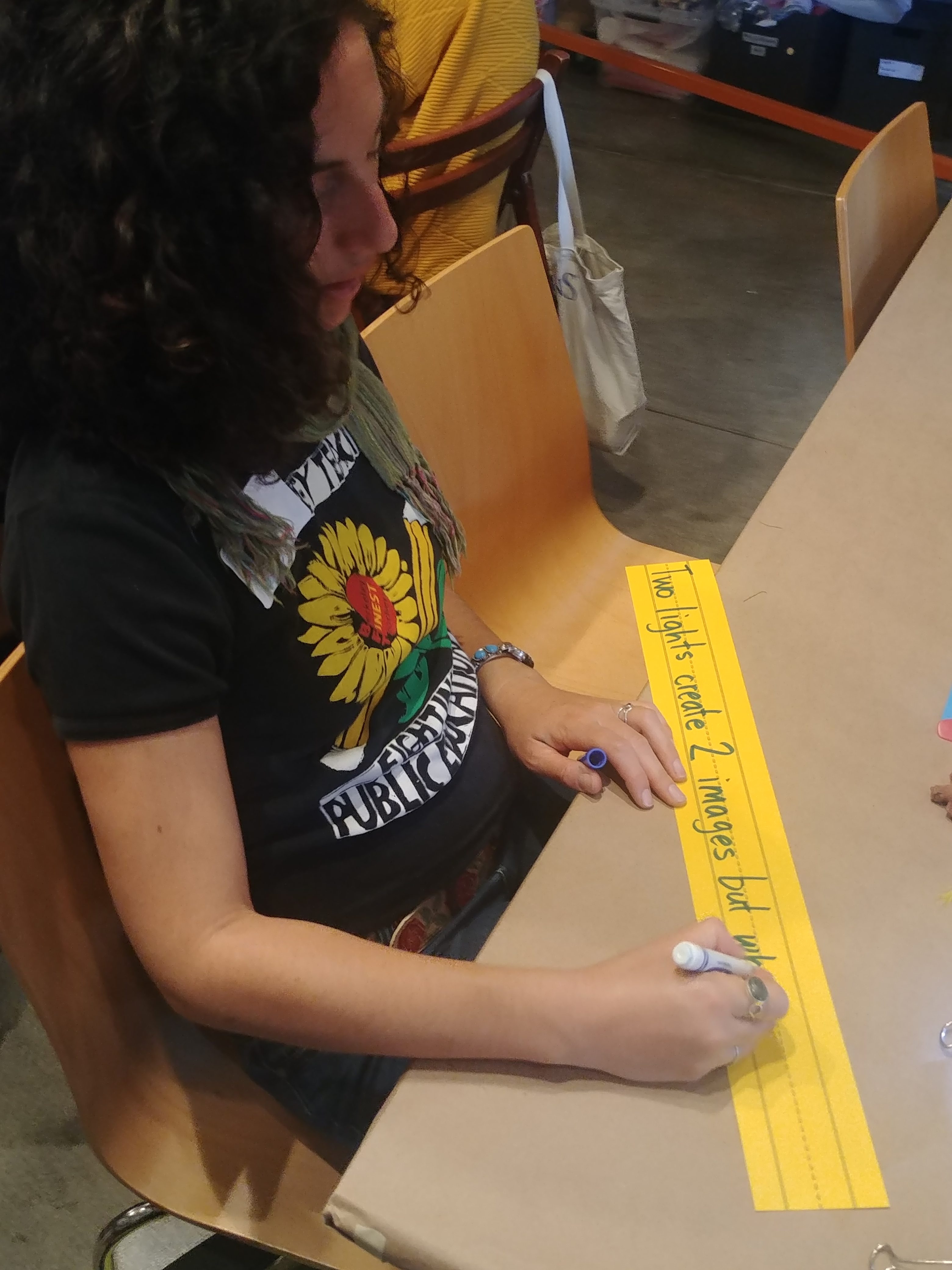

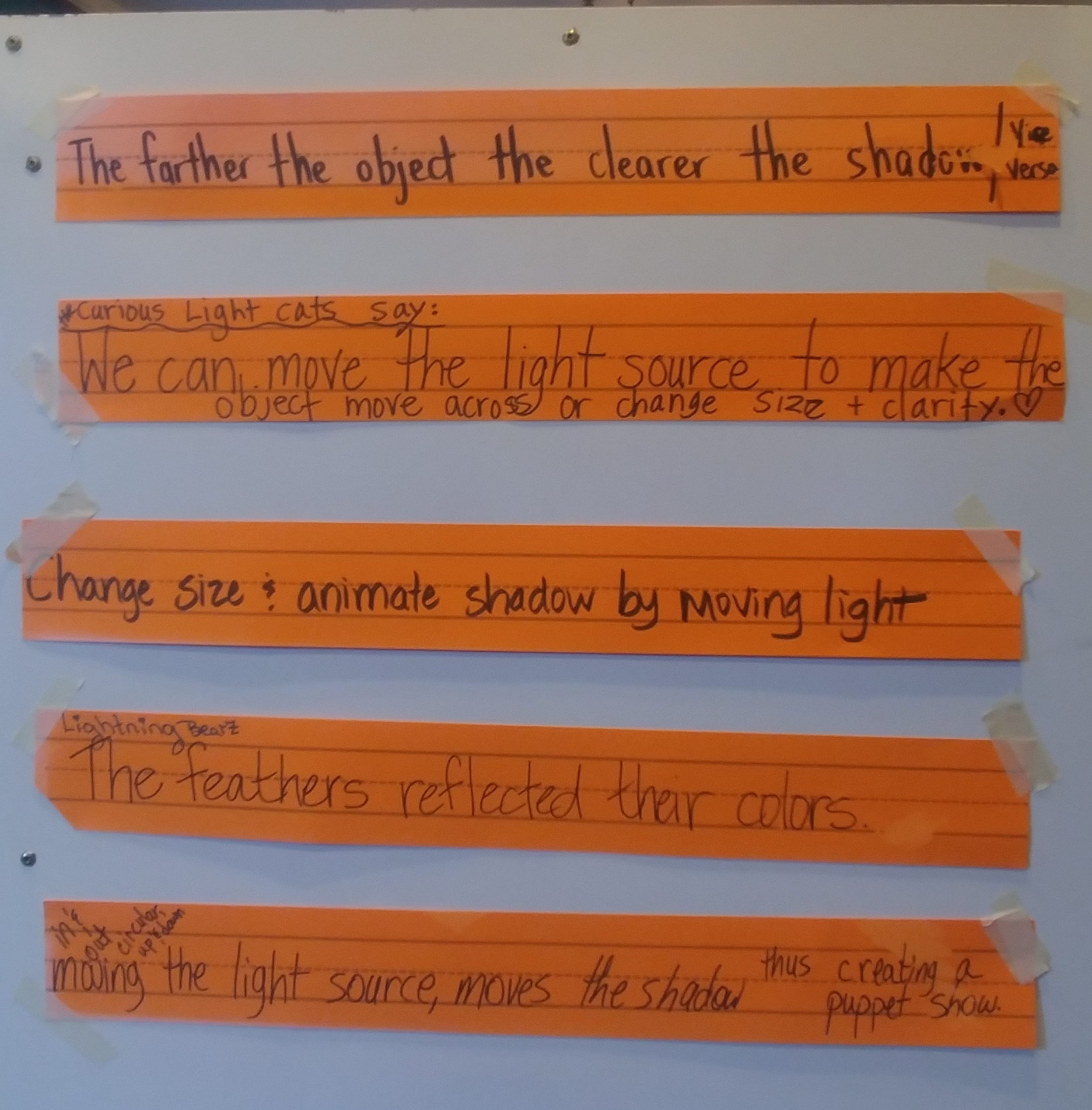
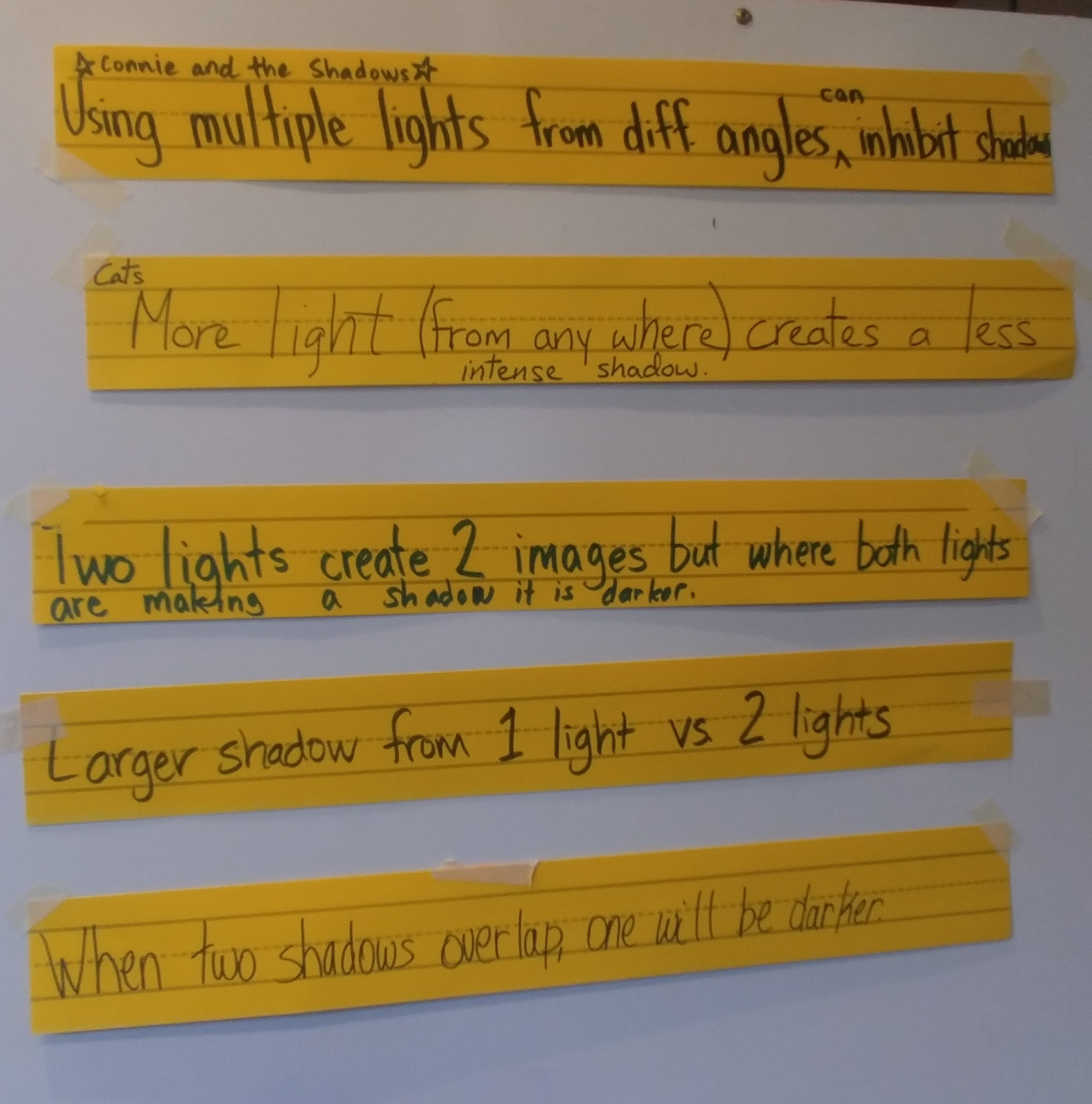
To close, we asked educators to reflect on their experience. We discussed interesting perspectives on the intersection of art and science, such as how the activity supported creativity and self-expression, while simultaneously building conceptual knowledge. Educators also shared that this activity supported their sense of agency by letting them own their discoveries and acquire their own knowledge. They commented on how the active engagement of a hands-on activity alongside unexpected outcomes led to deeper learning, joy, and collaboration. Additionally, educators responded to the variety and accessibility of materials—that they could collect these everyday objects easily in order to use them in their own classroom!


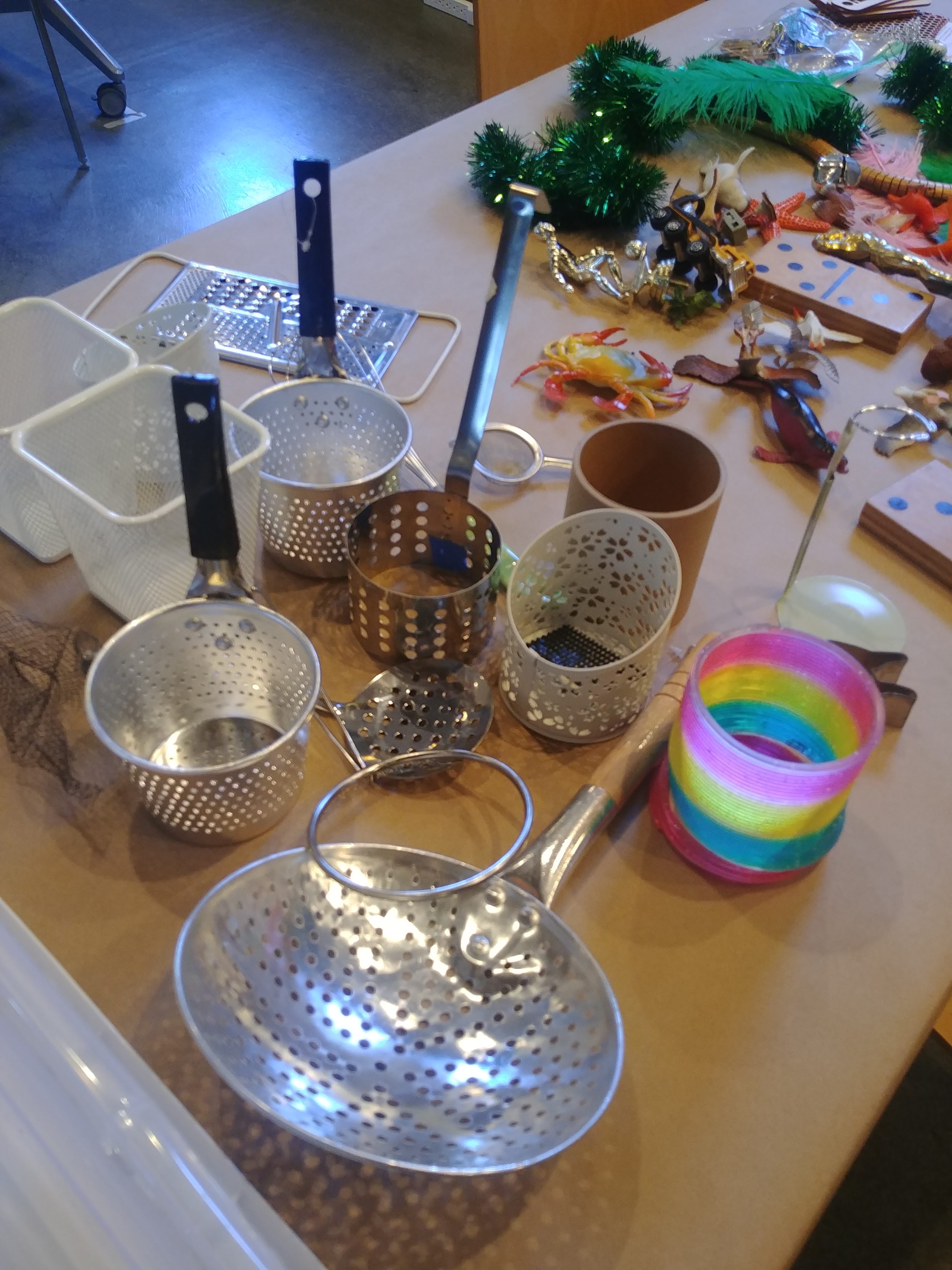
We were excited to hear educators make connections between design and facilitation when incorporating maker-centered activities into their classrooms. We introduced this Tinkering with Light & Shadow activity to science educators from CRS because it is a great example of a learner-driven, inquiry-based activity that aligns with NGSS practices. We structure this activity to model how to support learners as emerging scientists and engineers: Learners ask questions about the phenomenon they observe, carry out investigations of the properties of light they discover, develop their own models by making visible their whole class understanding of light, and engage in arguments from evidence when refining their class model through additional cycles of inquiry.
Thank you to Corinn and Teresa from CRS for gathering such an enthusiastic and engaged group of educators to explore the potential of making to transform teaching and learning!
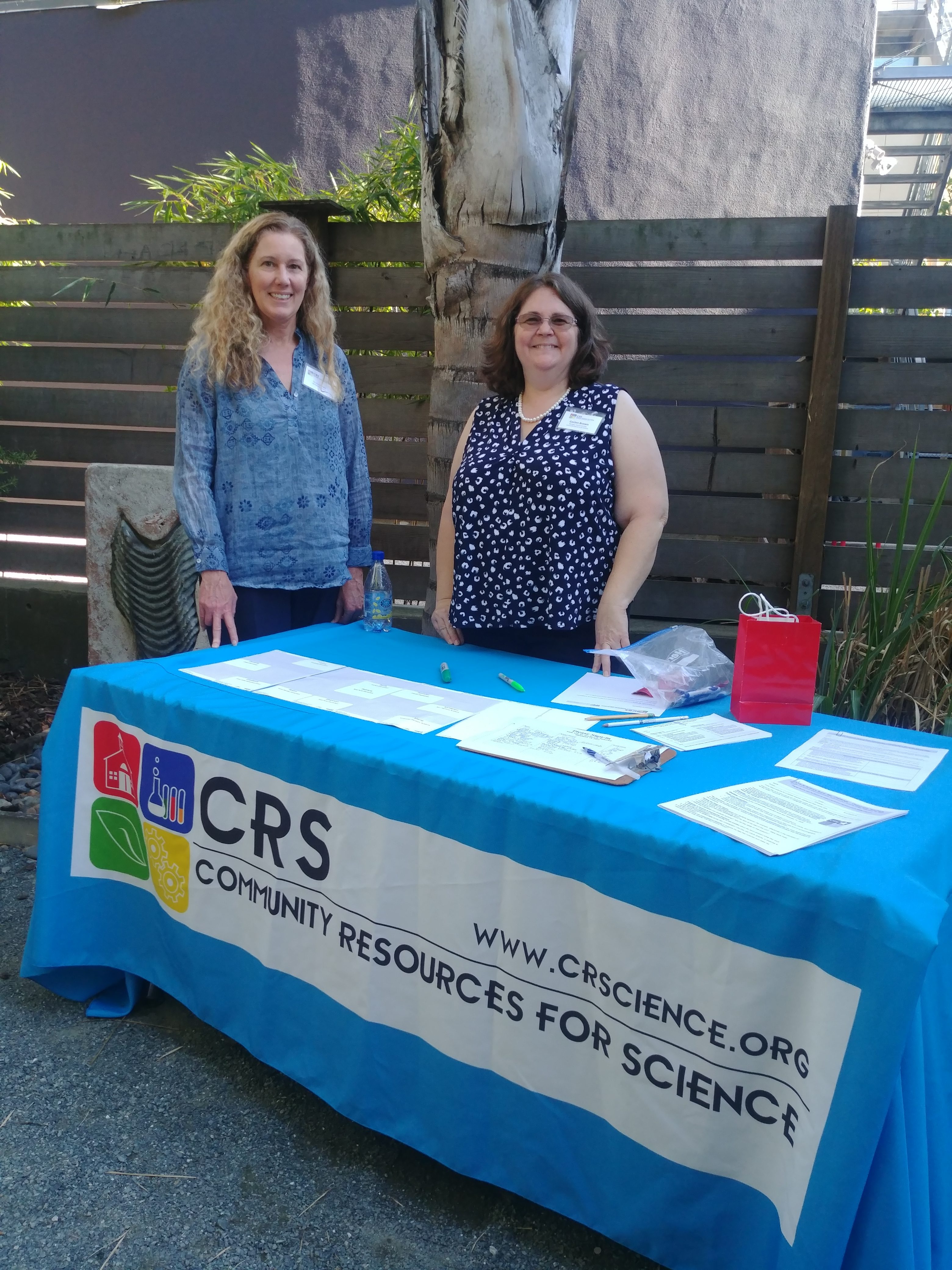
CRS in an organization that works to nurture student’s natural curiosity and craving to learn by “connecting classroom teachers with scientists, museums, enrichment providers, and professional development programs in order to bring more science learning experiences to students.” CRS shared that educators in their network had expressed an interest in maker education and we were glad to be able to meet that need by welcoming folks into our Community Studio.
Interested in learning more about bringing maker-centered learning in your classroom, library, museum, after school program, or makerspace? Join us for one of our events! Explore our workshop offerings or attend a maker educator meetup at our Bay Area Community Studio.
